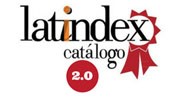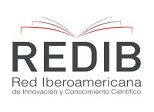Inventory of the Orchidaceae Familyin Pululahua Geobotanical Reserve
DOI:
https://doi.org/10.69890/hallazgos21.v3i1.207Keywords:
Pululahua Geobotanical Reserve; Inventory; Orchidaceae family.Abstract
The Pululahua Geobotanical Reserve has been identified as an area with an important plant diversity (905 spp. - Cerón, 2004), despite being one of the smallest protected areas within the PANE (Heritage of Natural Areas of the State) (3356 ha.) For this reason, in 2013, it was decided to start with the project "Inventory of the Orchidaceae Family in the Pululahua Geobotanical Reserve", which had the objective of gathering information on the wealth of species of this family within the protected area. The sampling was carried out from 2013 to the present, through the sweeping methodology that consists of the registration of the species found in the trails and roads within the protected area. A total of 153 species grouped in 57 genera have been identified, of which the most representative are Epidendrum (29 spp.), Pleurothallis (16 spp.), Maxillaria (10 spp.), Cyrthochilum (8 spp.), Lepanthes (5 spp.). Regarding the state of conservation, 27 species are considered within a category, according to the International Union for the Conservation of Nature: 13 as Vulnerable (VU), 4 as Near Threatened (NT), 8 in Minor Concern (MC) and 2 with Data Deficient (DD) (IUCN, 2012). In relation to Endemism, 19 species are considered endemic to Ecuador. The data obtained during this study shows an increase of 48 species in relation to what Cerón (2004) obtained, with which it can be seen that there is still a lot of information to be obtained within the protected area. The presence of species considered as Vulnerable prioritize the conservation of this family within the reserve to be a taxonomic group susceptible to be affected by the illegal trafficking of species.
References
Ackerman, J.D. & Ward, S. (1999) Genetic variation in a widespread, epiphytic orchid: where is the evolutionary potential? Systematic Botany, 24, 282–291.
Barthlott, W., Schmit-NeuerburgV., Nieder J.&EngwaldS. (2001). Diversity and abundance of vascular epiphytes: a comparison of secondary vegetation and primary montane rain forest in the Venezuelan Andes. Plant Ecology 152, 145 – 156.
Benzing, D.H. (1990). Vascular epiphytes: general biology and related biota. Cambridge UniversityPress, Cambridge.
Cerón Martinez, C. (1993). Manual de Botánica Ecuatoriana. Sistemática y métodos de estudio. Universidad Central del Ecuador. Quito- Ecuador.
Cerón Martínez, C. (2004).Reserva Geobotánica del Pululahua, Formaciones Vegetales, Diversidad, endemismo y Vegetación. CINCHONA 5 (1). Quito – Ecuador.
Dixon, K.W., Cribb, P.J., Kell, S.P. & Barrett, R.L. (eds.) (2003). Orchidconservation. Natural History Publications. Kota Kinabalu, Sabah.
Dodson, C. (1993). Native Ecuadorian Orchids. Volume 1. Editorial Colina. Medellín, Colombia.
Dodson, C. (2001). Native Ecuadorian Orchids. Volume 2. Editorial Colina. Medellín, Colombia.
Dodson, C. (2002). Native Ecuadorian Orchids. Volume 3. Dodson Trust, Sarasota, Florida.
Dodson, C. (2003). Native Ecuadorian Orchids. Volume 4. Dodson Trust, Sarasota, Florida.
Dodson, C. (2004). Native Ecuadorian Orchids. Volume 5. Dodson Trust, Sarasota, Florida.
Dressler, R. L. (1993). Phylogeny and Classification of Orchid Family. Cambridge University Press, Cambridge, Massachusett.
Endara, L., Williams N. H., León – Yánez, S. (2009) Patrones de Endemismo de orquídeas endémicas ecuatorianas: perspectivas y prioridades para la conservación. En: Pridgeon A. M., Suarez, J.P. (eds). Proceedings of the Second Scientific Conference on Andean Orchids. Universidad Técnica Particular de Loja, Loja, Ecuador, pp 63-70.
Endara, L. (2011). Orchidaceae. In: León-Yánez, S., R. Valencia, N. Pitman, L. Endara, C. Ulloa & H. Navarrete (eds.), Libro Rojo de las plantas endémicas del Ecuador, 2nd. Edition(pp. 441 – 702).Publicaciones del Herbario QCA, Pontificia Universidad Católica del Ecuador, Quito.
Unión Internacional para la Conservación de la Naturaleza. (2012) Guidelines for Application of IUCN Red List Criteria at Regional and National Levels: Version 4.0. Gland, Switzerland and Cambridge, UK.
Krömer T., Gradsein S. R.&Acebey A. (2007). Diversity and ecology of vascular epiphytes in natural montane forests and fallows of Bolivia. Ecología en Bolivia 42(1): 22-33.
Küper, W., KreftH., NiederJ., KosterN. &Barthlott, W. (2004). Large-scale diversity patterns of vascular epiphytes in Neotropical montane rain forests. Journal of Biogeography 31, 1477–1487.
Ministerio del Ambiente del Ecuador. (2011). Plan de Manejo de la Reserva Geobotánica Pululahua. Dirección Nacional de Biodiversidad, Quito.
Ministerio del Ambiente del Ecuador. (2013). Sistema de Clasificación de los Ecosistemas del Ecuador Continental. Subsecretaría de Patrimonio Natural, Quito.
Nieder, J., Engwald S. &Barthlott, W. (1999). Patterns of Neotropical Epiphyte Diversity. Selbyana 20(1): 66-7.
Nowicki, C. (1998). DiversitätepiphytischerundterrestrischerPflanzeneinesecuadorianischen BergnebelwaldesimVergleich." Diploma thesis. BotanischesInstitut. Universität Bonn. Germany.
Oña, E., Reina, D., & Lagla, B. (2017). Informe técnico del levantamiento base para el Plan de manejo de Reserva Geobotánica Pululahua. Ministerio del Ambiente del Ecuador. Quito - Ecuador.
Parra – Sánchez E., Armenteras D. &Retana J. (2016). Edge Influence on Diversity of Orchids in Andean Cloud Forests. Forests 7 (63), 1 – 13. doi:10.3390/f7030063.
Rauer, G. (1995). Epiphytische Orchidaceae eineswestandinenBergregenwaldes in Ecuador. Diploma thesis. BotanischesInstitut. Universität Bonn. Germany.
Swarts, N. D. & Dixon W. (2009). Terrestrial orchid conservation in the age of extinction. Annals of Botany 104, 543–556. doi:10.1093/aob/mcp025.
Webster, G., & Rhode, R. (2001). Plant Diversity of an Andean Cloud Forest: Inventory of the Vascular Flora of Maquipucuna, Ecuador. University of California Press. Retrieved from http://www.jstor.org/stable/10.1525/j.ctt1ppgnk
Downloads
Published
How to Cite
Issue
Section
License
Los artículos enviados a la Revista Científica Hallazgos21 deberán ser totalmente originales e inéditos.
Los autores son los responsables de los textos y las imágenes incluidas en los artículos y no necesariamente reflejan el pensamiento de la editorial o de la Pontificia Universidad Católica del Ecuador, Sede Esmeraldas (PUCESE).
Los autores disponen cederle a la Revista Científica Hallazgos21 todos los derechos inherentes para la edición, publicación y distribución o divulgación del mismo.
Se autoriza a las revistas firmantes de los acuerdos de Encuentros de Revistas Latinoamericanas para reproducir en parte o totalmente los artículos con la sola mención de la fuente claramente señalada.







